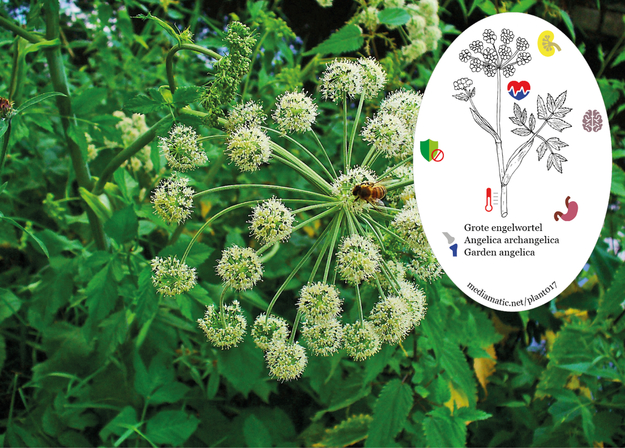Angelica has a long folk-history of use as a medicinal herb, in particular for the treatment of digestive disorders and problems with blood circulation. The root is the most active medicinally, it should be harvested in the autumn of its first year of growth, sliced longitudinally if necessary and dried quickly. If well stored, the root retains its medicinal virtues for many years. The leaves and seeds can also be used. The leaves are harvested and dried in late spring before the plant comes into flower. The plant is antispasmodic, carminative, diaphoretic, diuretic, expectorant, stimulant, stomachic, tonic. An infusion is used to ease flatulence, indigestion, chronic bronchitis and typhus. It stimulates blood flow to the peripheral parts of the body and so is of value in treating poor circulation - it is considered a specific treatment for Buerger's disease, a condition that narrows the arteries of the hands and feet. Angelica is contra-indicated for people with a tendency towards diabetes since its use can increase sugar levels in the urine. This plant should not be prescribed for pregnant women, nor should the juice be allowed to come into contact with the eyes. An essential oil from the seeds is sometimes used as a rub to relieve rheumatic conditions. The German Commission E Monographs, a therapeutic guide to herbal medicine, approve Angelica archangelica fruit for fevers and colds, infection of the urinary tract, dyspeptic complaints and loss of appetite. The root has been approved for dyspeptic complaints and loss of appetite. No health hazards or side-effects if the proper administration of therapeutic dosages. Avoid sunbathing and intensive UV radiation for the duration of a treatment. Source: https://pfaf.org/
Garden Angelica
Angelica archangelica
Find more about this plant on Wikipedia.

With:
De Godin